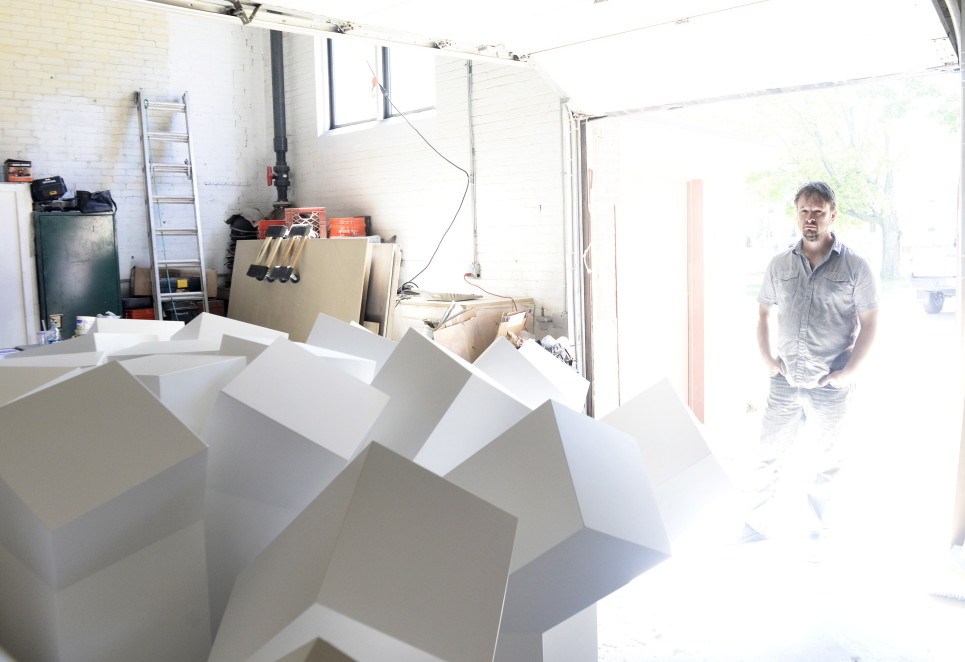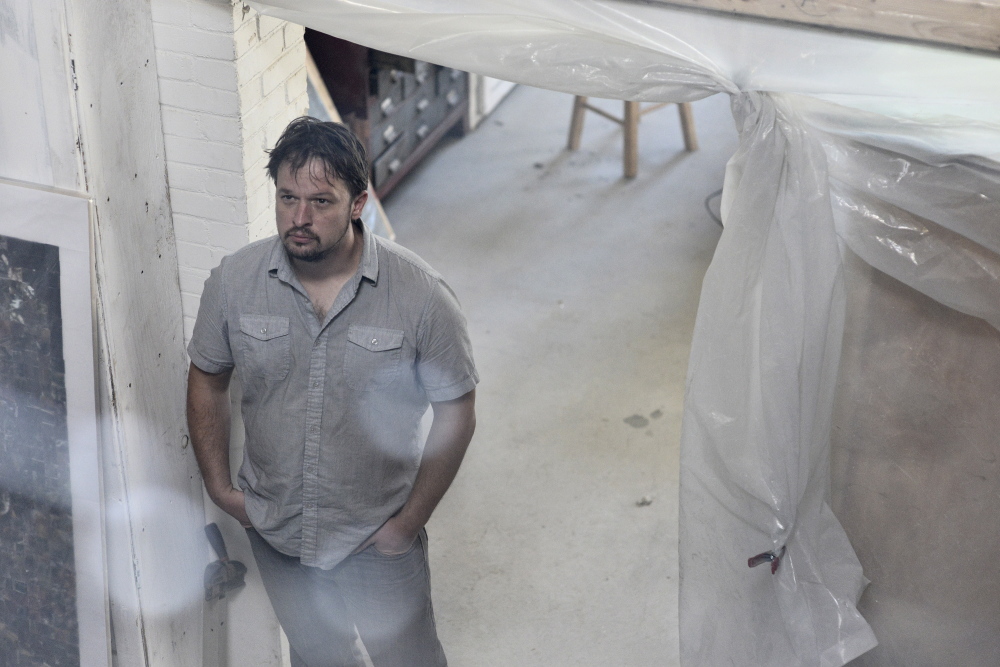Aaron T Stephan rang up $3,000 in phone bills for one of the pieces in his exhibition at the Portland Museum of Art.
That would be $3,000 in calls to phone sex girls.
Only, the 40-year-old Portland artist didn’t talk about sex with the women he called. He talked about art.
“After about 10 minutes, they all sort of gave up and said, ‘Well, what do you want to talk about?’ I asked, ‘Where do you go to see art?’ ‘What do you think about sculpture?’ ”
The piece, “Conversations,” is part of “To Borrow, Cut, Copy, and Steal,” the Portland museum’s latest installment in its “Circa” series, which focuses on contemporary art. Some of Stephan’s sculptural pieces will be on view in the Great Hall. The rest will be on the fourth floor.
“Conversations” isn’t on view at all.
Visitors are prompted by wall text to call a phone number that connects them with portions of Stephan’s phone calls with phone-sex operators.
Don’t worry. It’s G-rated material. But what’s most interesting about the piece is that there’s nothing to look at, nothing to see. There’s no physical object to behold. Visitors don’t have to sit in a portal to listen. There are no headphones to wear, no video to watch, no buttons to push.
They can call the number anytime from anywhere. There’s no ticket to buy, no fee, no surcharge.
They don’t even have to step inside the museum, which is almost the point of the exhibition. “To Borrow, Cut, Copy, and Steal” represents Stephan’s view of the fine-art museum experience.
For most people, that means a history of art told through paintings that hang on the wall.
For Stephan, it means something else.
With this show, he challenges the museum conventions and procedures that most people accept as the norm.
“Off-Mark” is composed of 32 wood pedestals, the kind that might hold marble busts or porcelain vases under glass. Only here, Stephan arranges them in a mishmash. They’ll move around the Great Hall throughout the duration of the exhibition.
“Spilled Paint” drips a 12-by-20-foot sheet of painted rubber from a gallery balcony. You can almost hear him laugh at the artists whose paint drips are meant to enhance their canvases.
“28 Columns” is, as the title implies, a series of composite columns arranged like falling Dominoes. So much for the stately facade.
“I’m not saying there’s anything wrong with the museum experience,” Stephan said. “I’m just exploring what it really means. Less than clarifying things, I’m really just pointing out how complex the museum experience really is.”
The museum’s contemporary art curator, Jessica May, described Stephan’s work as “that moment when an artist’s work can make the whole museum snap to attention.”
He challenged the staff to think and act differently.
“That was a nice moment for us,” May said. “We had to ask, ‘What is this art object in front of us that does not conform to our preset expectations of art?’ We took it for granted that it had to be rooted in the building.”
Accepting that it doesn’t was liberating, she said.
“We had to get off the idea that you had to go to the museum to experience art,” she said. “The museum does not have to be about the building. It has to be about the experience.”
Copy the Story LinkSend questions/comments to the editors.





Success. Please wait for the page to reload. If the page does not reload within 5 seconds, please refresh the page.
Enter your email and password to access comments.
Hi, to comment on stories you must . This profile is in addition to your subscription and website login.
Already have a commenting profile? .
Invalid username/password.
Please check your email to confirm and complete your registration.
Only subscribers are eligible to post comments. Please subscribe or login first for digital access. Here’s why.
Use the form below to reset your password. When you've submitted your account email, we will send an email with a reset code.